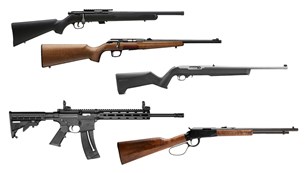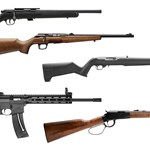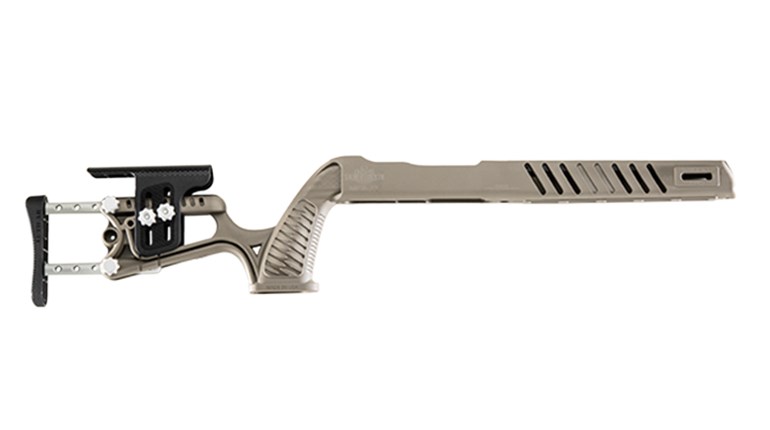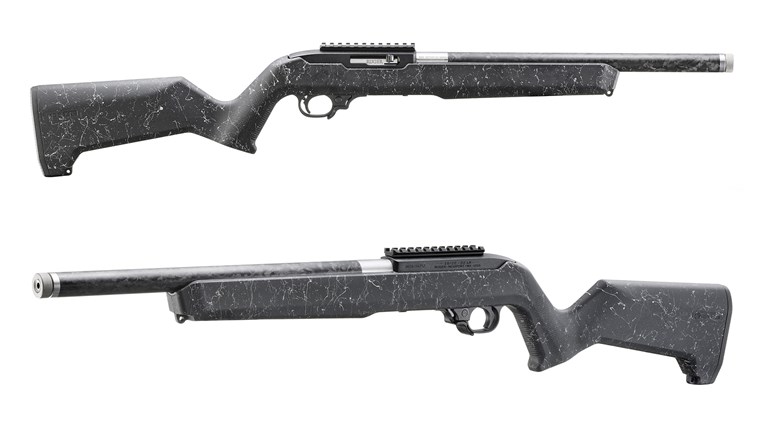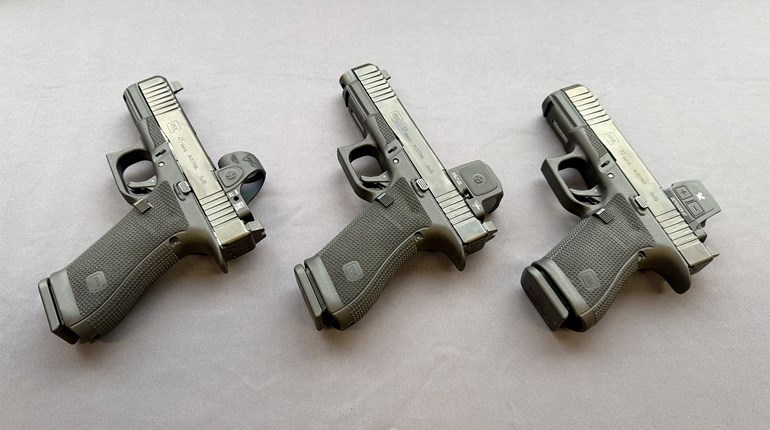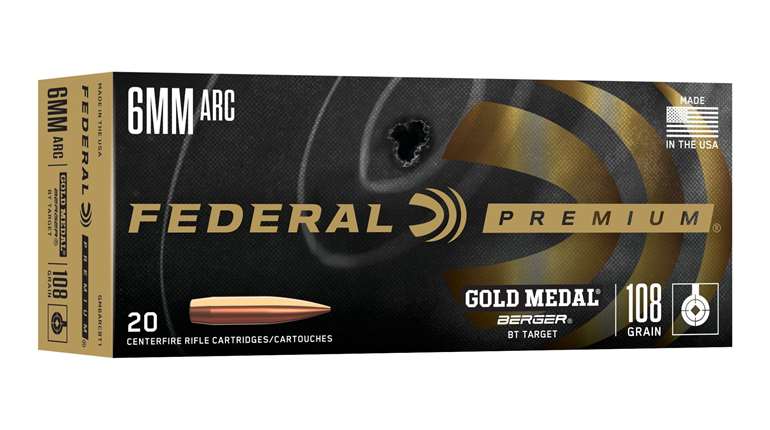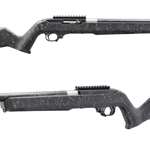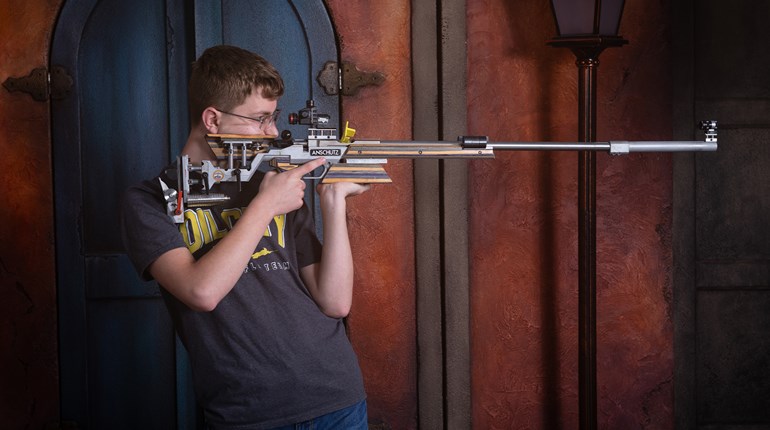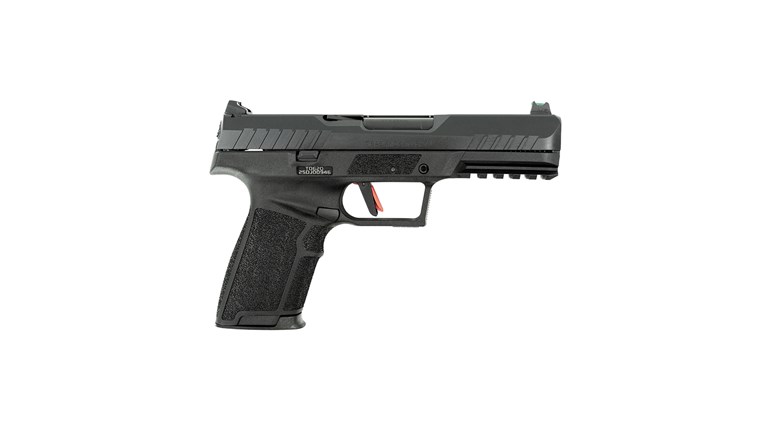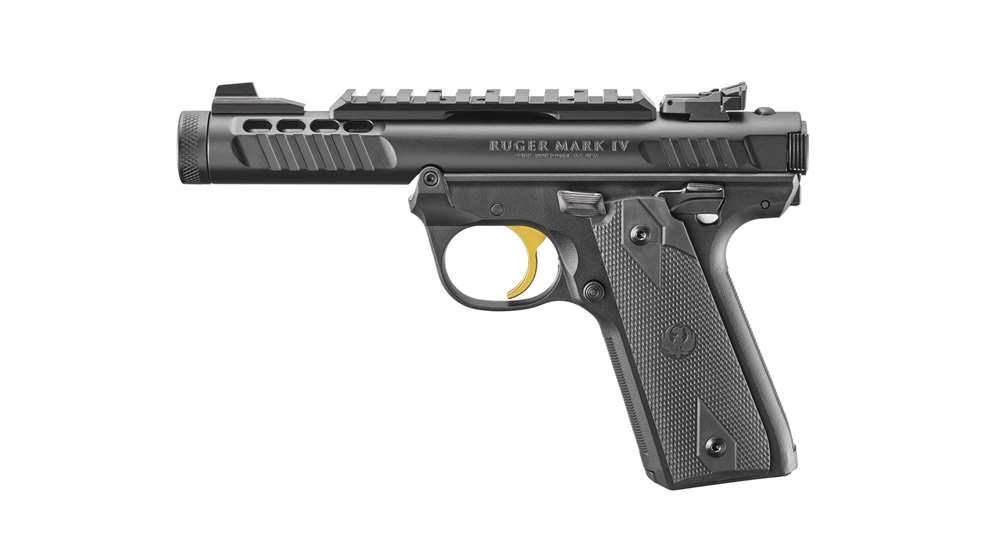
Working from a rented workshop in 1949, William B. Ruger launched a semi-automatic pistol chambered in .22 Long Rifle that ultimately became the most popular and prolific rimfire pistol made. The Ruger Standard (later known as the Mark I) featured a nine-shot detachable magazine and combined the enclosed bolt design of the Japanese Type 14 Nambu pistol with the graceful profile and grip angle of the German P-08 Luger. Subsequent years saw upgrades to the basic design which resulted in the Mark II and Mark III.
In 1992, a new model was added—the Mark III 22/45. It used the same mechanical design but changed the grip angle to that of the classic 1911. Originally viewed as an economical trainer, it soon became popular in its own right.
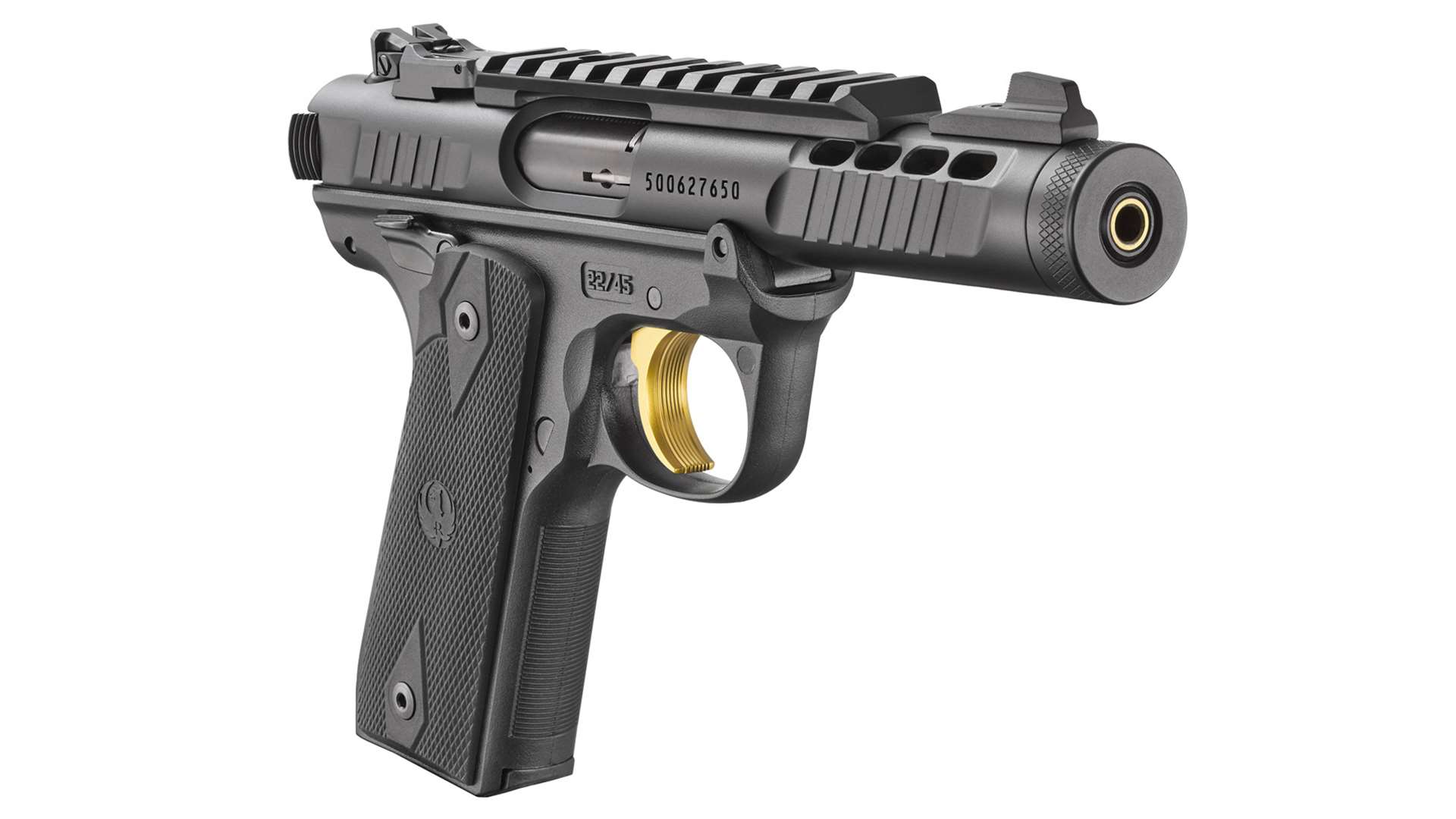
As popular as these guns were, they did have an Achilles heel. Disassembly for cleaning was a real bear. I still remember my first attempt at stripping my Mark II. That resulted in a thoroughly embarrassing visit to the local gunsmith with a paper bag full of gun parts in one hand and my wallet in the other. Fortunately, Ruger corrected that in 2016 with the upgraded Mark IV featuring a simple one-button take down.
More recently, the Mark IV 22/45 was introduced in a Lite version featuring a polymer frame, and this year two new models were added to the Mark IV 22/45 Lite line that are identical in all respects except for external cosmetics. I choose the plain black model for this review (No. 43956).
Built on a lightweight, aerospace-grade, ventilated aluminum receiver and a polymer frame, the Mark IV 22/45 Lite (MSRP: $739) tips the scales at a petite 25 ounces. The 4.40-inch long, cold hammer-forged stainless-steel barrel features the standard 1:16-inch right-hand twist and is threaded 1/2x28 to accept muzzle accessories. A sturdy thread cap is included. Grip panels are flat 1911 slabs that are easily replaceable. A serrated front strap and checkered rear strap provide a textured gripping surface. The overall length is 8.40 inches, with a height of 5.50 inches and a width of 1.22 inches.
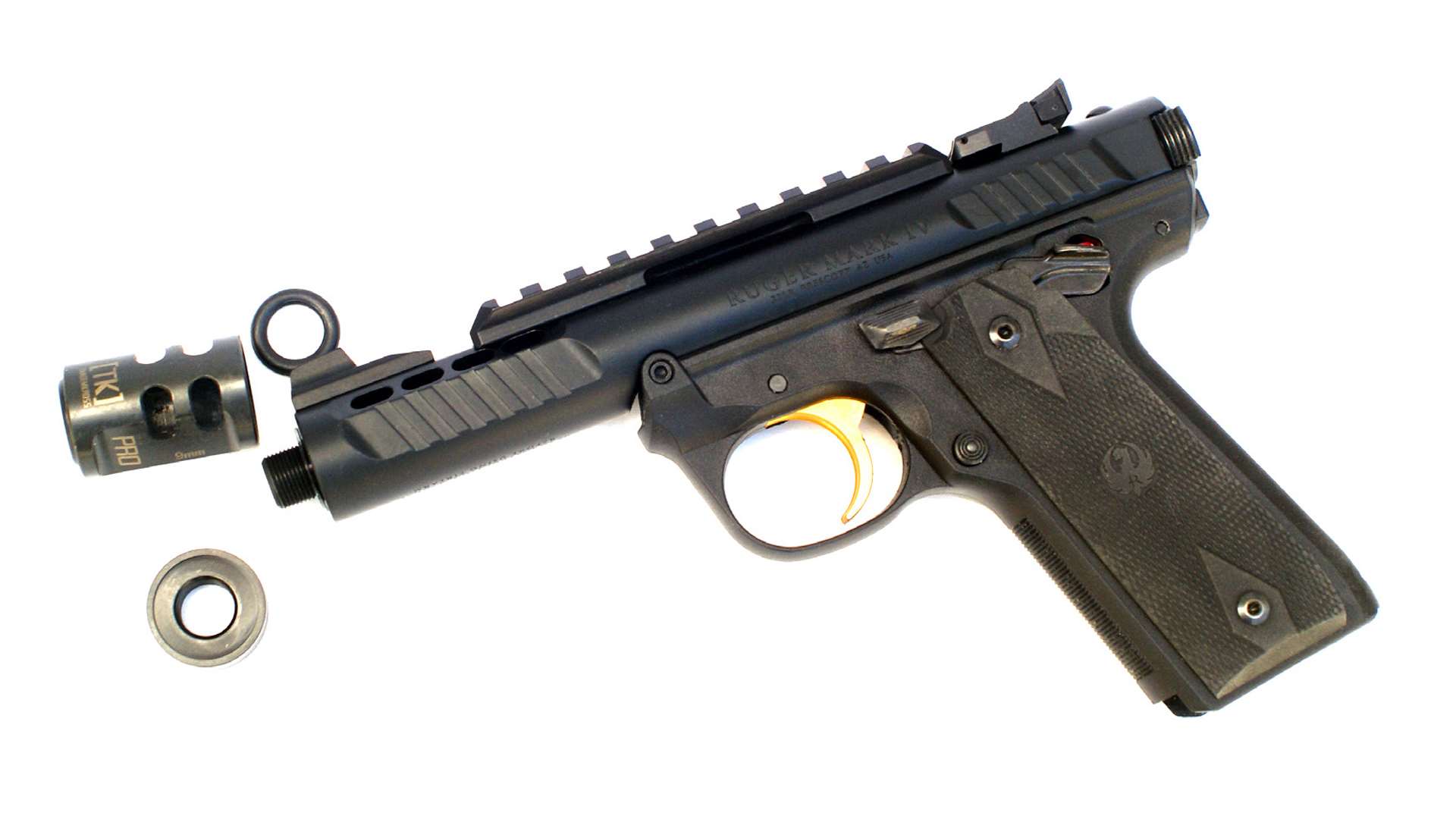
Operating controls consist of a left-side slide release, ambidextrous thumb safeties and a push-button magazine release on the left grip for a drop-free magazine release. A magazine disconnect safety is also incorporated.
My digital trigger gauge measured the trigger pull at a consistent five pounds, three ounces. That’s pretty standard for a factory .22 pistol, but a bit more than competitive shooters might prefer. Both Tandemkross and Volquartsen make trigger kits for the 22/45 that reduce the trigger to the 2¼-pound range. I have the Volquartsen trigger on the Mark IV Target and am very happy with it.
The sight package is versatile. Iron sights are standard with a plain black adjustable rear sight in a dovetail. The front blade sight is plain black ramp secured with a screw that allows it to be easily replaced with one of the various fiber-optic front ramp sights. The receiver is also drilled and tapped to accept a Pic or Weaver rail. It ships with a Pic rail installed and the iron sights are usable with the removable rail installed. The gun ships in a lockable hard plastic case with two 10-round magazines.
ON THE RANGE
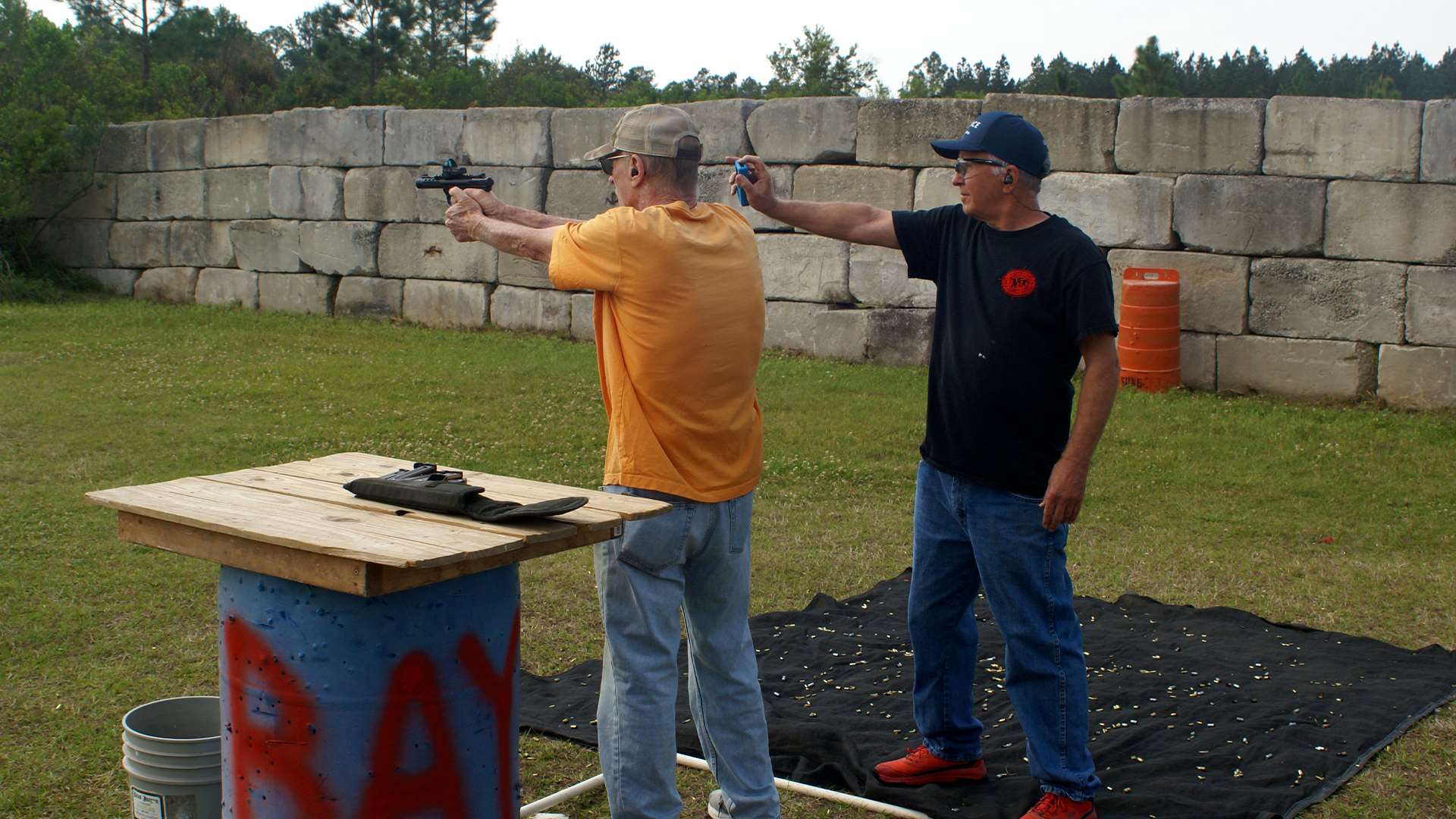
From the box, my first step was my usual strip, check and lube. With the Mark IV design, it’s ridiculously easy. Remove the magazine, rack the bolt to clear the chamber, flip the safety on, leave the gun cocked, push the rear take down button, remove the barrel assembly and take out the bolt. Everything is now easily accessible for cleaning. Reassembly requires nothing more than inserting the bolt, slipping the barrel onto the frame and closing it up.
With the gun lubed, I assembled my test loads and decided to include a variety ranging from premium match ammo through budget-priced bulk loads. They consisted of Lapua 40-grain Pistol King, SK 40-grain Pistol Match, Lapua 40-grain Center X, CCI 40-grain plated Mini-Mag Target, CCI TSJ 40-grain Clean High Velocity and Federal 40-grain lead Auto Match.
My first step was to zero the iron sights from my 25-yard bench rest with the Center X load. They were a bit low and right, but adjusted on quickly. The iron sights were usable with the Picatinny rail installed, but if I were going to use the gun with irons, I would remove the rail.
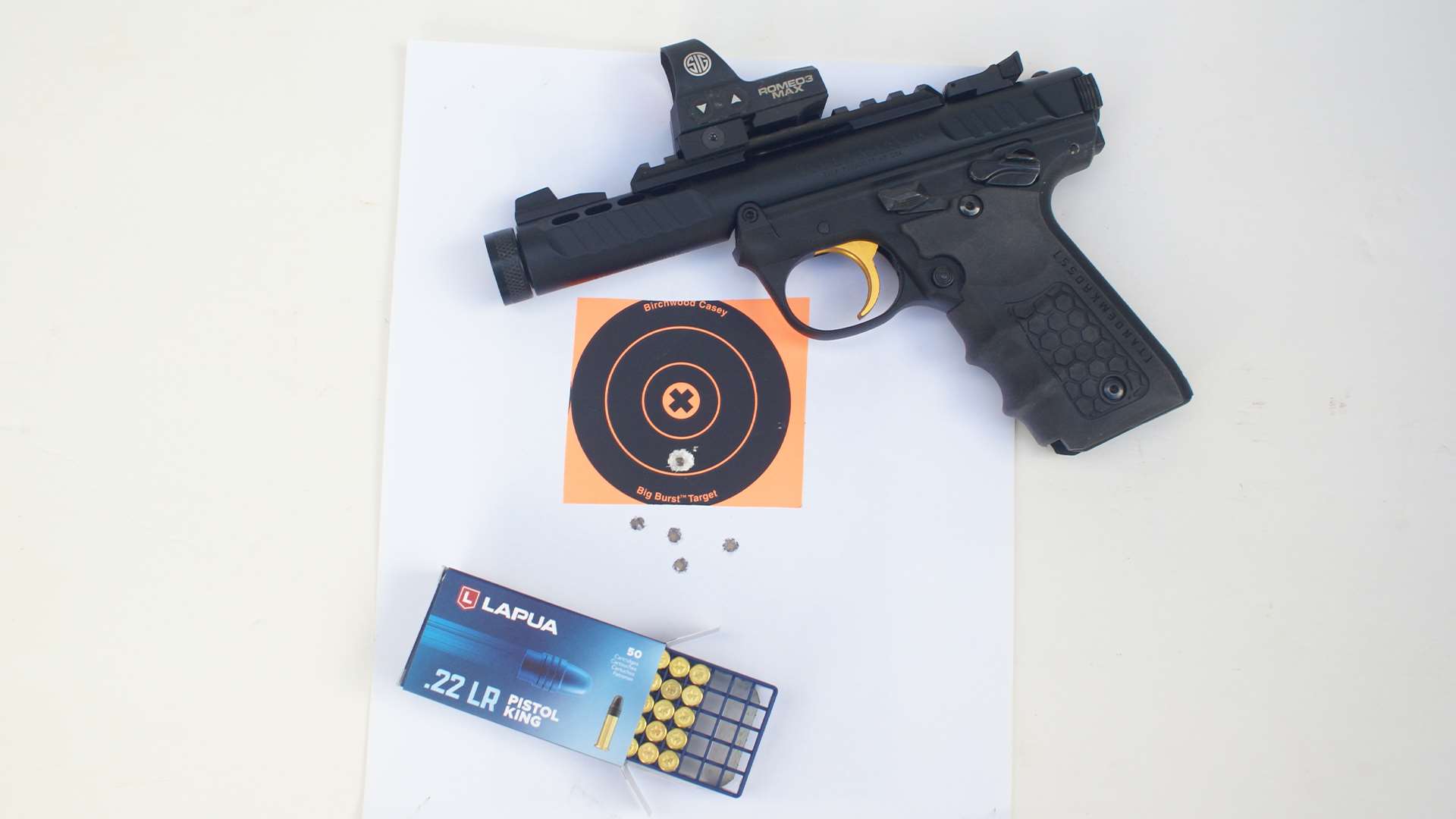
Since iron sights weren’t in my plans, I removed the SIG Romeo3 Max from my Ruger Mark IV Target and installed it on the 22/45. Back on the bench, I zeroed the optic with the Center X and set up five of my white cut-out targets on my target range. I ran all six of the test loads through the gun to check functioning and get used to the gun. The grips left something to be desired. I’ve never been a fan of the slab-sided 1911 grip panels. I have found that when driving hard they caused me to over grip the gun, which brought on hand tremors. I noticed it immediately when running quickly through multiple the targets. The dot was doing some frantic wobbling on the last couple of targets. I remembered when a fellow shooter was showing me his 22/45 with some larger rubber grips on it. I liked those grips so I called him, he told me they were Hive grips that he received from Ruger.
I ordered a set from Ruger and they made a big difference. After about 150 rounds through the gun, I settled down on the 25-yard bench for accuracy tests. The accompanying table shows all the loads produced good to excellent accuracy, but there was a surprise.
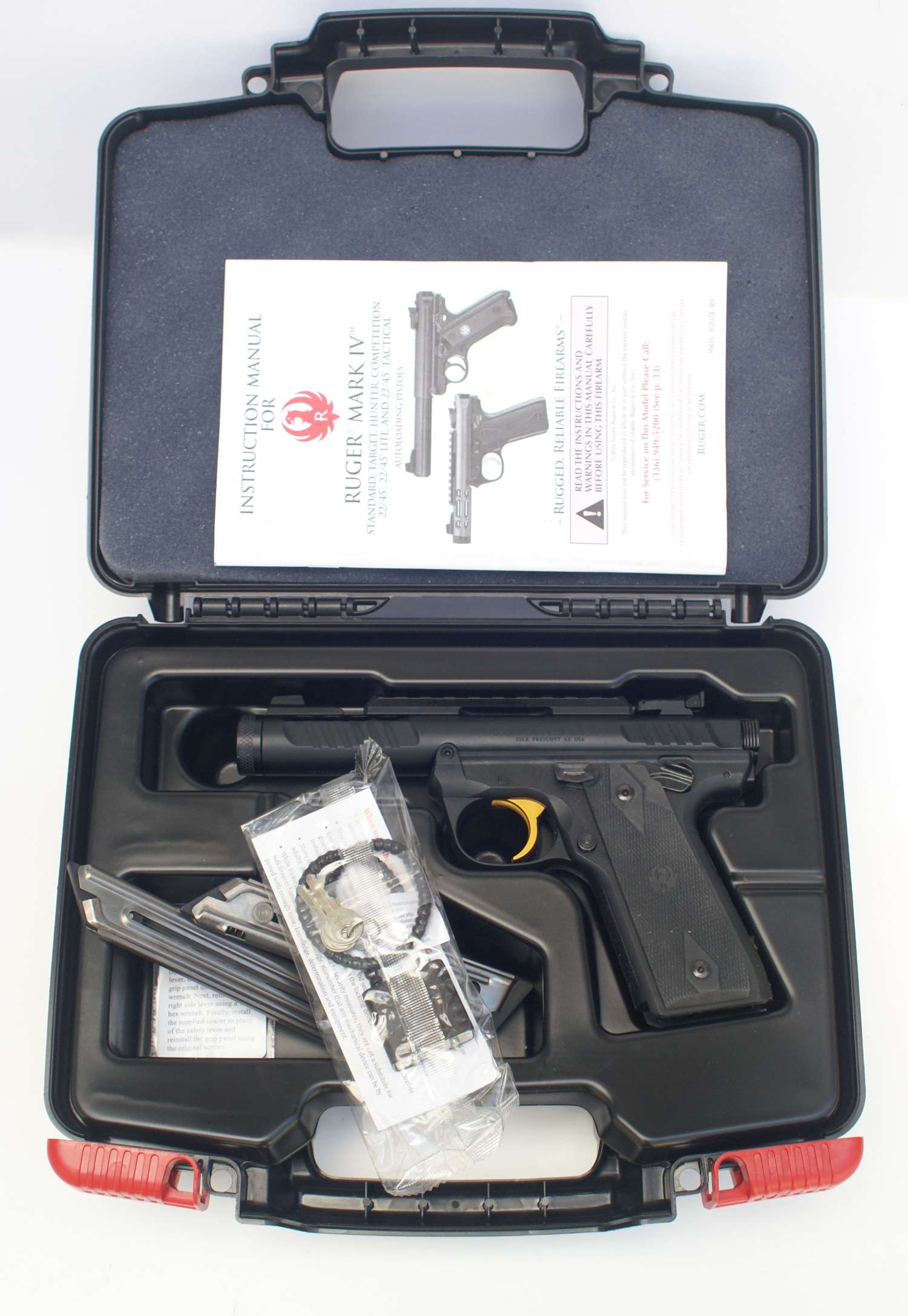
My Mark IV Target that normally wears that sight weighs 36 ounces and I have fired all the loads I used from the bench with that gun. I know how far the dot rises on recoil with them. The 22/45 Lite weighs 25 ounces; almost 3/4-pound less. I had naturally assumed that the lighter gun would have more rise on recoil. But it didn’t. There was noticeably less dot rise. The only explanation I can come up with is the 1911 grip angle on the 22/45 has my wrist cocked more upward than the P-08 grip angle on the target. Apparently, that removes some of the distance my wrist can flip upwards and provides a built-in brace. I could be wrong, but the fact remains that there was less dot rise with the 22/45. In fact, the SK Pistol match almost didn’t move at all. It just sort of quivered. I then cleaned the gun and loaded it up with the SK Pistol match for my club’s weekly Steel Challenge match.
ACCURACY TABLE
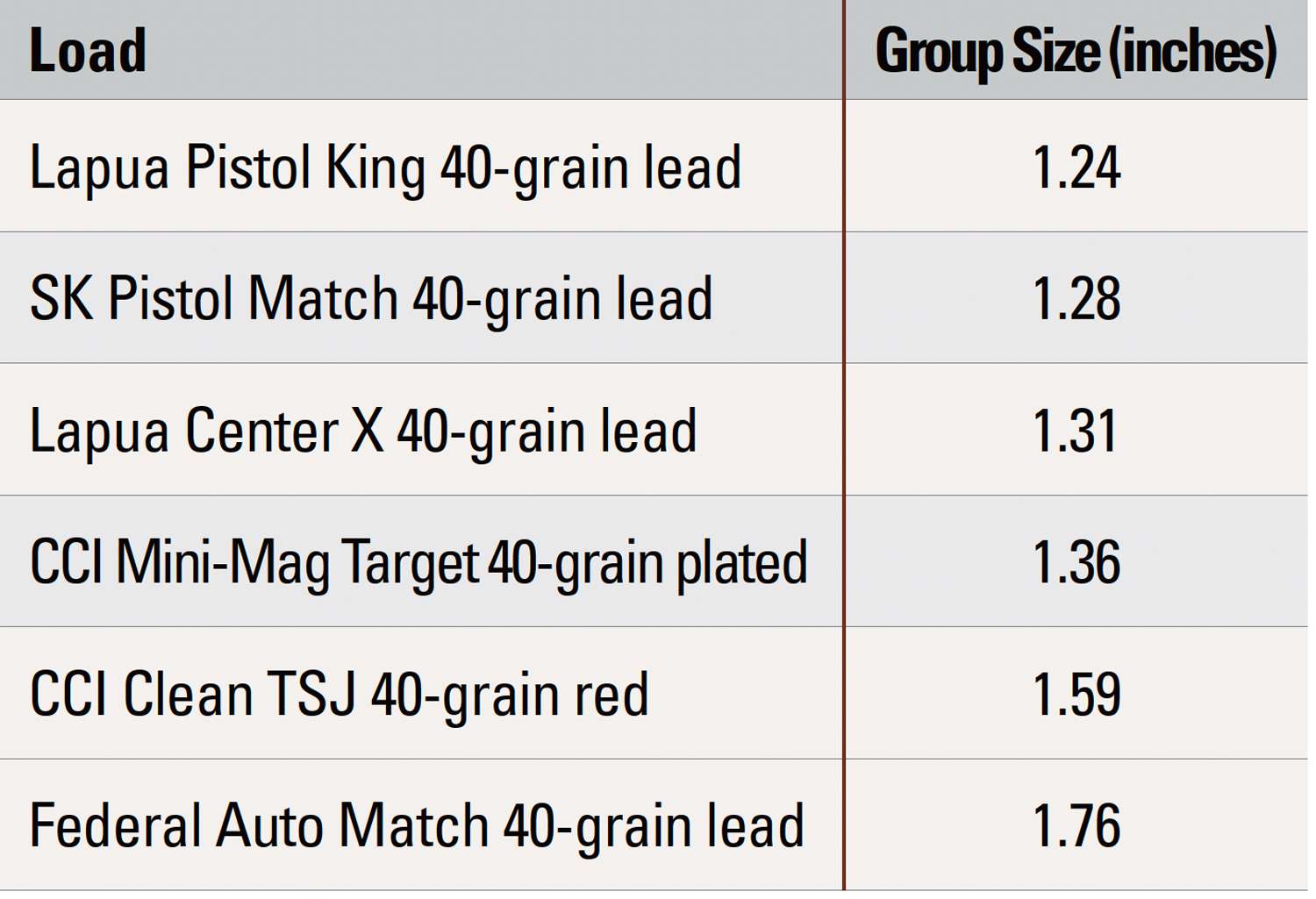
Light gun weight and minimal muzzle rise made swinging through the five plates quick and easy. I didn’t beat any of my personal best A Class times, but I got close on several. The gun and ammo performed perfectly and I figured that was pretty good for a new gun with a different grip angle.
My second match saw me beat two of my personal best scores. By that time, there were about 800 rounds through the gun with only two cleanings before each match. During those 800 rounds the only malfunctions were three failures to eject with the Federal Auto Match. With any .22 LR semi-automatic, that’s darn good reliability. The issue I had with the grips is one I’ve had with every match pistol I’ve owned, and it may just be my hands/grip. But the solution was right there at Ruger.
SPECIFICATIONS
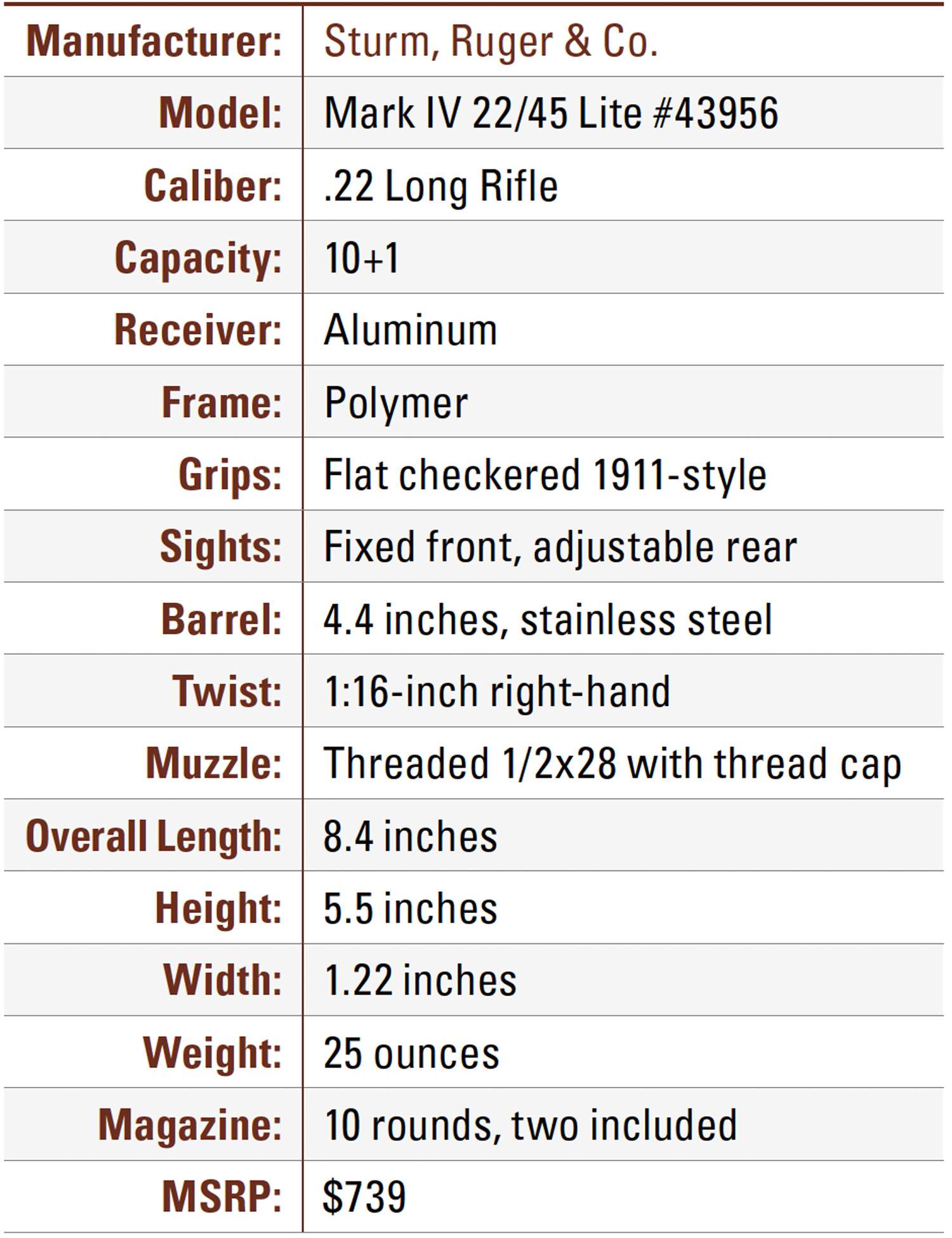
Accurate, reliable, quick handling and with a simplified take down system, this newest version of the Mark IV 22/45 Lite is an excellent performer and a worthy edition to the Ruger rimfire pistol legacy.



